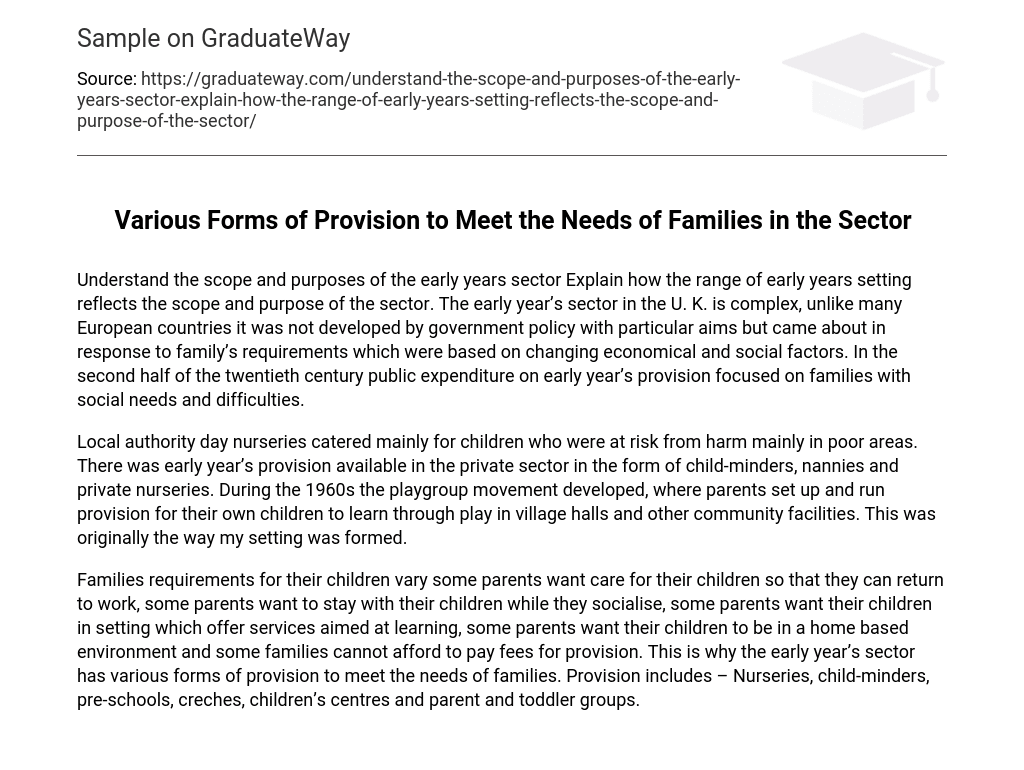Understand the scope and purposes of the early years sector Explain how the range of early years setting reflects the scope and purpose of the sector. The early year’s sector in the U. K. is complex, unlike many European countries it was not developed by government policy with particular aims but came about in response to family’s requirements which were based on changing economical and social factors. In the second half of the twentieth century public expenditure on early year’s provision focused on families with social needs and difficulties.
Local authority day nurseries catered mainly for children who were at risk from harm mainly in poor areas. There was early year’s provision available in the private sector in the form of child-minders, nannies and private nurseries. During the 1960s the playgroup movement developed, where parents set up and run provision for their own children to learn through play in village halls and other community facilities. This was originally the way my setting was formed.
Families requirements for their children vary some parents want care for their children so that they can return to work, some parents want to stay with their children while they socialise, some parents want their children in setting which offer services aimed at learning, some parents want their children to be in a home based environment and some families cannot afford to pay fees for provision. This is why the early year’s sector has various forms of provision to meet the needs of families. Provision includes – Nurseries, child-minders, pre-schools, creches, children’s centres and parent and toddler groups.





